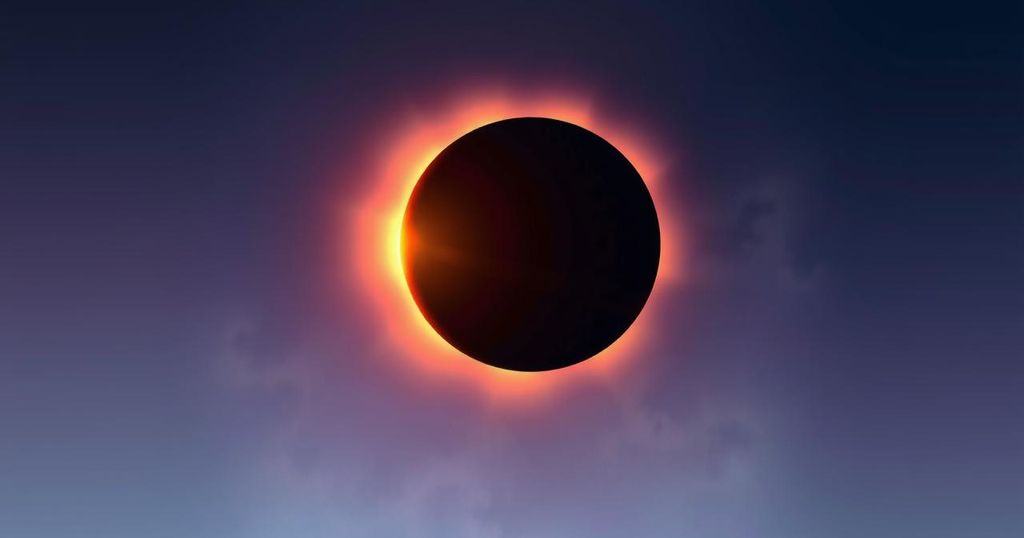Solar Eclipse 2025: India and the ‘Double Sunrise’ on March 29
The March 29, 2025 solar eclipse will be a partial event, not visible from India. Key visibility will be in Eastern and Northern Canada, with up to 93.1% coverage. Eye protection is critical, with eclipse glasses or viewers recommended. Direct viewing through optical devices is hazardous. A partial eclipse occurs when the Moon obscures part of the Sun.
On March 29, 2025, the first solar eclipse of the year is set to occur, though only a partial eclipse will be observed. During this event, the Sun, Moon, and Earth will not perfectly align, resulting in only a fraction of the Sun being obscured. Eye protection is paramount; individuals should use eclipse glasses or solar viewers, as regular sunglasses will not adequately shield the eyes during this phenomenon.
India will not experience this solar eclipse, as the Moon’s shadow will not traverse the country’s geography. Notably, the eclipse will be highly visible in parts of Eastern and Northern Canada, with a maximum obscuration of 93.1% of the Sun’s surface. The northeastern United States will also witness significant coverage, exceeding 85%, while regions in Africa, Siberia, the Caribbean, and Europe will see lesser degrees of the partial eclipse.
Eclipse timings indicate that this event will commence at 4:50 AM EDT (2:20 PM IST), peak at 6:47 AM EDT, and conclude around 8:43 AM EDT. In India, although the eclipse begins at 2:20 PM IST and reaches its zenith by 4:17 PM IST, the phenomenon will not be observable due to the alignment of celestial bodies.
Proper safety measures must be adhered to while attempting to view the eclipse. It is crucial to wear eclipse glasses or use handheld solar viewers that meet the ISO 12312-2 safety standard. Regular sunglasses do not offer sufficient protection. Additionally, individuals should refrain from viewing the Sun through optical devices like binoculars or telescopes while wearing eclipse glasses, as serious eye injuries could result. Indirect viewing methods, such as using a pinhole projector or relying on natural projections from tree leaves, are recommended alternatives to direct observation.
A partial solar eclipse occurs when the Moon partially blocks the Sun as it moves between the Earth and the Sun. This positioning results in the Sun appearing to have a portion obscured, creating a unique visual for observers located in the designated path of the partial shadow.
In summary, the solar eclipse on March 29, 2025, will be a partial eclipse, and unfortunately, India will not be able to observe it. Instead, significant visibility is anticipated in Northern Quebec and the northeastern United States, among other locations. As always, proper eye protection is essential when attempting to view the eclipse, given the risks associated with direct sun exposure.
Original Source: www.hindustantimes.com




Post Comment